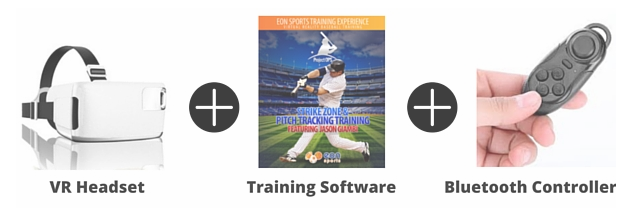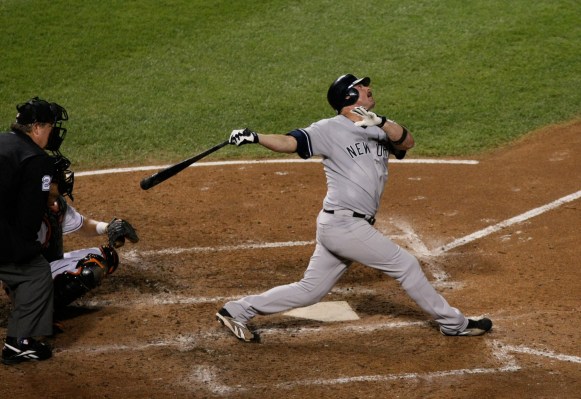Everybody needs a hobby when they retire, and former major league baseball player Jason Giambi turned to virtual reality, teaming with EON Sports on a virtual reality hardware-software package to teach players how to recognize pitches and understand the strike zone.
The solution, which is called Project OPS consists of software, a Bluetooth controller and virtual reality headset that can plug into an Android or iPhone. You fire up the software, put on the headset, and have a 360 degree view of a ball park with a pitcher on the mound pitching to you.
The idea is that as the pitch comes to the plate, you make your pitch selection and decide whether you think it’s going to be a strike or not. It’s set up in a game format, so you get more points the more often you understand what you’re seeing. The training software is designed to help hitters understand the skills and techniques to begin to get better at pitch and strike zone recognition in the game (and presumably eventually in real life).

The whole package is available for $159.
Giambi was particularly excited by the price. He expected this type of technology was going to cost $500 or $1000. When he heard it was $159, it made him even more enthusiastic about the project. While there are more sophisticated virtual reality batting practice tools, those go for tens of thousands of dollars, and as Giambi pointed out, there is limited access to this technology. This puts the technology in reach of a lot more people and that appealed to him.
Giambi played baseball for over 20 years getting over 2000 hits including 440 home runs, and winning the American League Most Valuable Player award in 2000 when he was a member of the Oakland As. He had a reputation as a great hitter with a keen eye at the plate, garnering over 100 walks 7 times.
Toward the end of his career, Giambi says his role became more of a mentor and he realized when he talked hitting with younger players, there were no real tools to help them learn the strike zone, something he was obviously very good at.
When Dan O’Dowd, his former General Manager for the Colorado Rockies (and current MLB network analyst) approached Giambi about teaming up with EON Sports CEO Brendan Reilly on this project, he said he jumped at the chance. While he’s not a technical guy, he brought his considerable experience as a professional hitter to the project.
“I wouldn’t consider myself a techie, but I saw how this could make a kid a better player. The more repetitions you take in game situations the better you are going to be,” he said.
His role was to make sure that virtual experience was as realistic as possible. He would say the pitch wasn’t coming out of the pitcher’s hand right or the ball was skipping in an unnatural way on the way to the plate — and the programmers adjusted accordingly.
As Giambi explained, players can work on their swing in the batting cage and they can watch video of pitchers and their at-bats, but that typically involves a camera behind the pitcher, and that’s not how hitting works in a game.
With this game, you’re facing the pitcher. You’re seeing his windup. You’re seeing how the ball comes out of his hand, the spin and you’re learning to recognize the pitch, the placement and whether it’s going to be in or out of the strike zone.
He also liked the fact that you could use the game, even in areas where the weather isn’t baseball friendly for a lot of the year. It lets young players work on pitch and strike zone recognition skill, regardless of location or weather.
When he first started in baseball, Giambi said the tools were crude, basically a video cassette and a VCR. Even though the tools available today are so much better as it has moved to digital, he says he has never seen anything like this.
Over time, they could add the ability to swing a bat. They could also use specific pitchers, which would be tremendously valuable for college and professional players, who are trying understand a guy’s delivery before getting into the box in a game situation.
For now, Giambi is fired up about the potential of this game and how it can help players at all levels become smarter and more successful hitters using virtual reality. And that’s a pretty good start.
